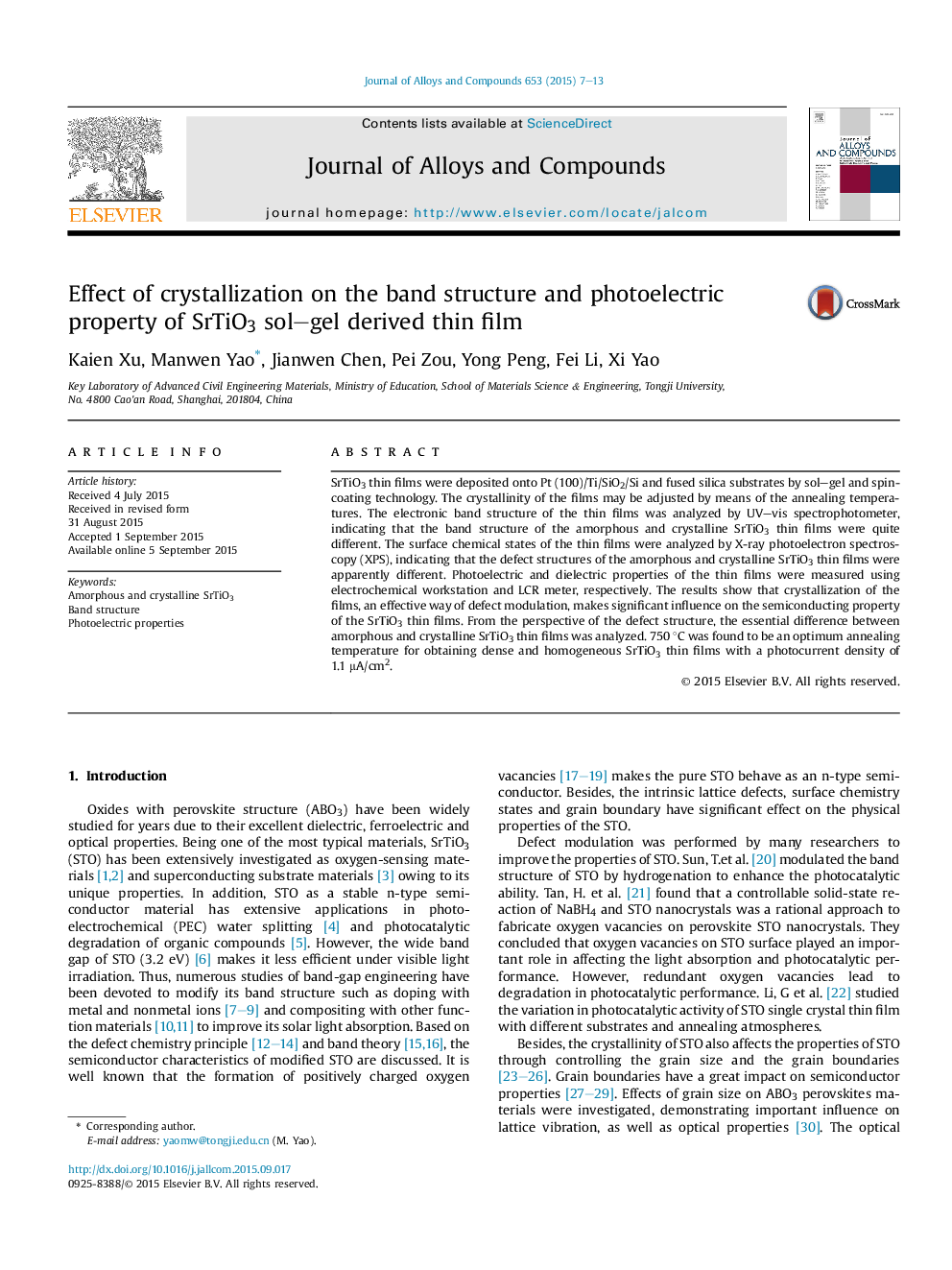| Article ID | Journal | Published Year | Pages | File Type |
|---|---|---|---|---|
| 1607508 | Journal of Alloys and Compounds | 2015 | 7 Pages |
•Amorphous and crystalline SrTiO3 thin films were prepared by sol–gel method.•Huge difference of defect structure between amorphous and crystalline SrTiO3.•We discuss the difference from the perspective of defect forms and band structure.•Band structure sketches to explain the difference above.•Photoelectric property changes from the crystallinity of thin films.
SrTiO3 thin films were deposited onto Pt (100)/Ti/SiO2/Si and fused silica substrates by sol–gel and spin-coating technology. The crystallinity of the films may be adjusted by means of the annealing temperatures. The electronic band structure of the thin films was analyzed by UV–vis spectrophotometer, indicating that the band structure of the amorphous and crystalline SrTiO3 thin films were quite different. The surface chemical states of the thin films were analyzed by X-ray photoelectron spectroscopy (XPS), indicating that the defect structures of the amorphous and crystalline SrTiO3 thin films were apparently different. Photoelectric and dielectric properties of the thin films were measured using electrochemical workstation and LCR meter, respectively. The results show that crystallization of the films, an effective way of defect modulation, makes significant influence on the semiconducting property of the SrTiO3 thin films. From the perspective of the defect structure, the essential difference between amorphous and crystalline SrTiO3 thin films was analyzed. 750 °C was found to be an optimum annealing temperature for obtaining dense and homogeneous SrTiO3 thin films with a photocurrent density of 1.1 μA/cm2.
Graphical abstractFigure optionsDownload full-size imageDownload as PowerPoint slide
